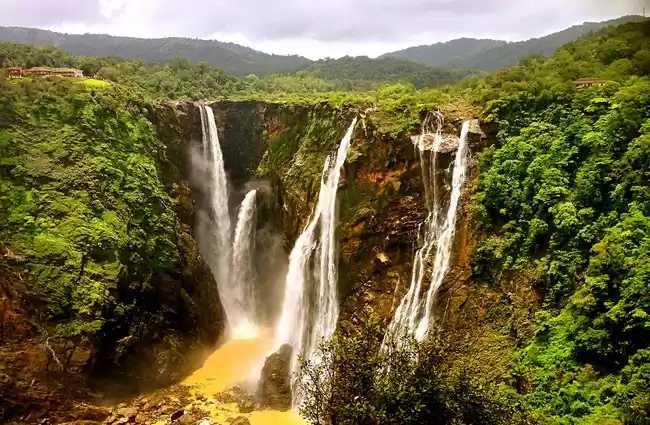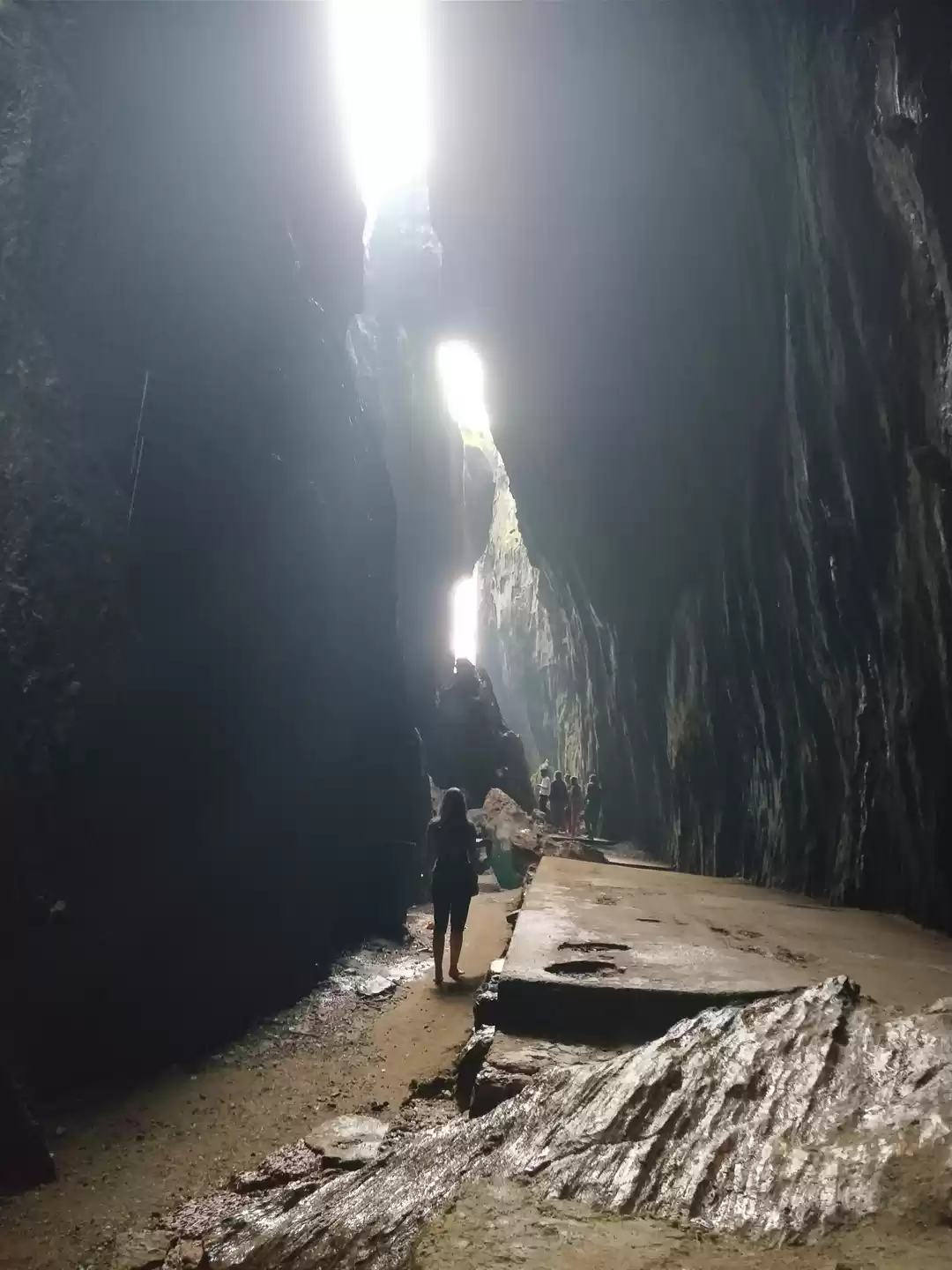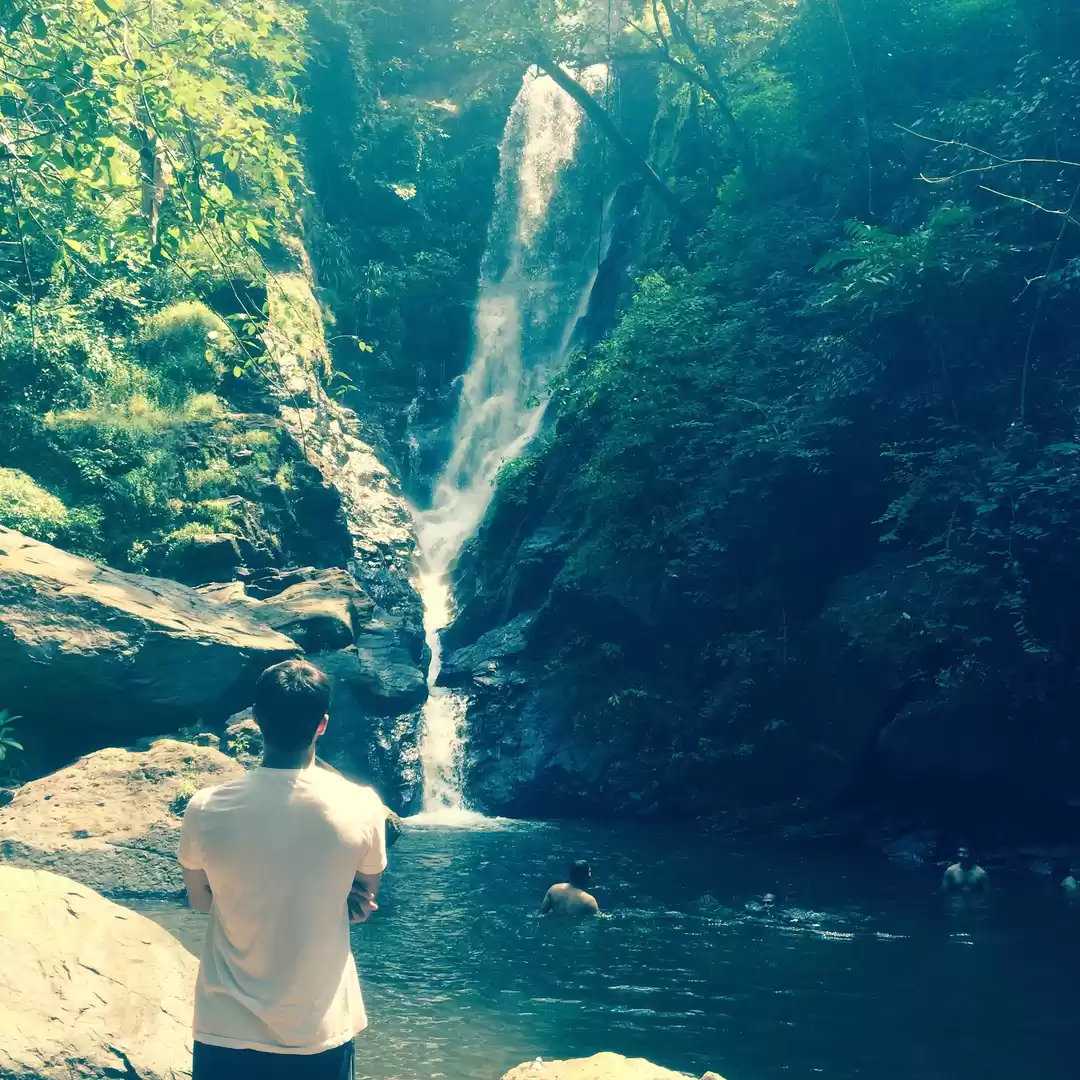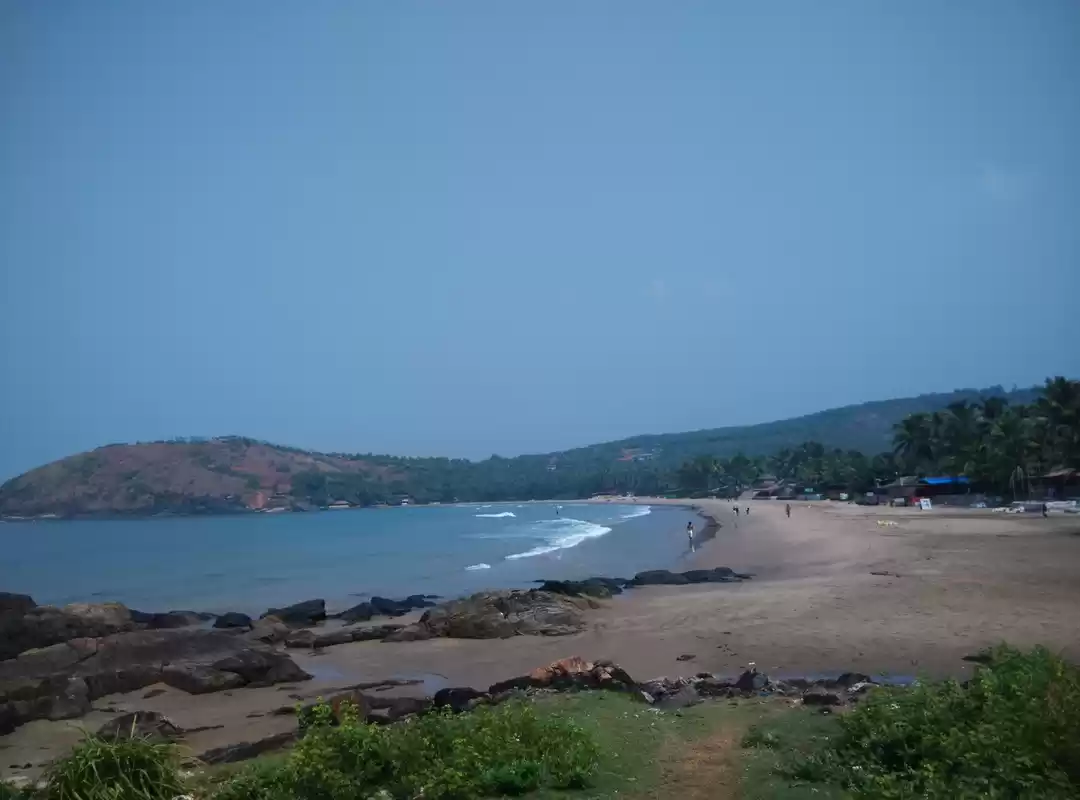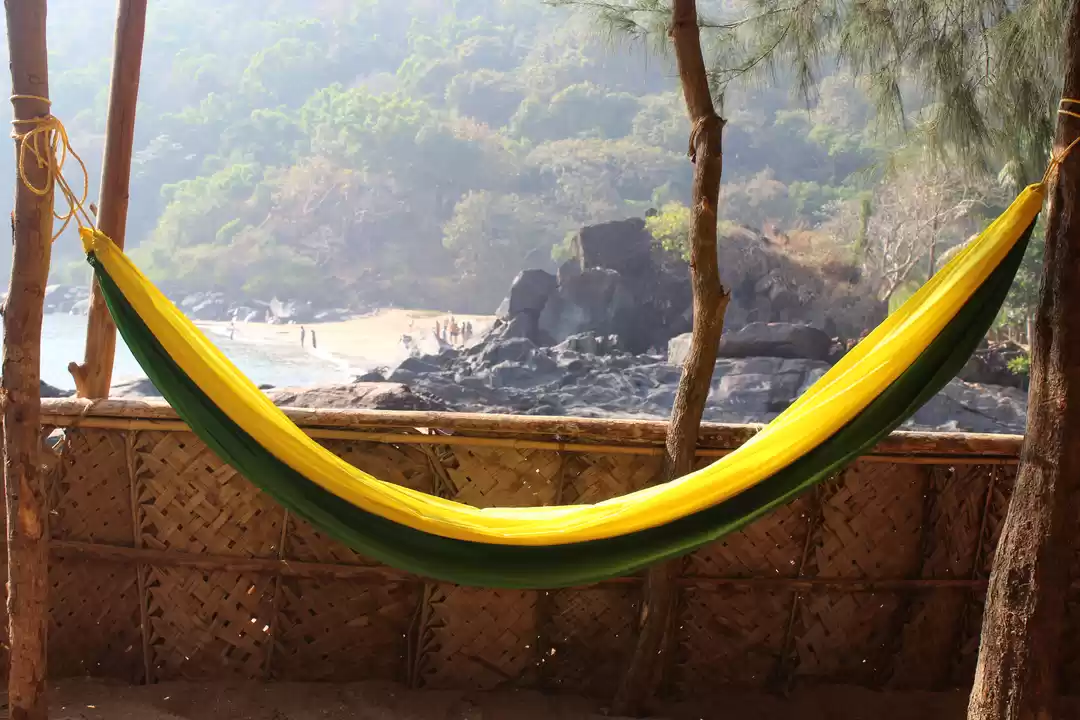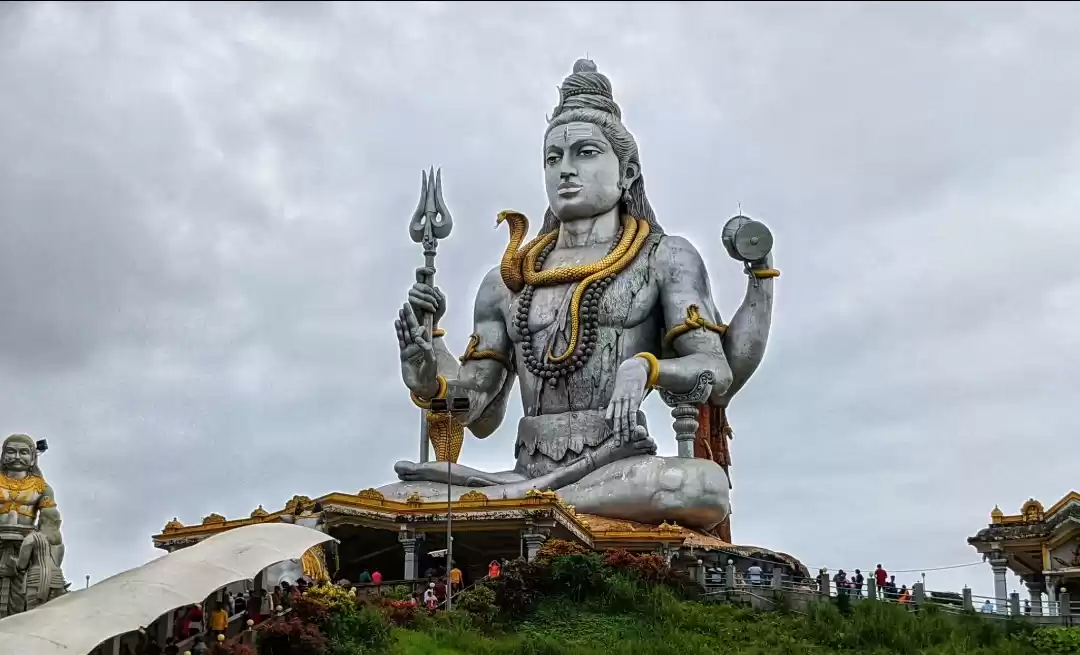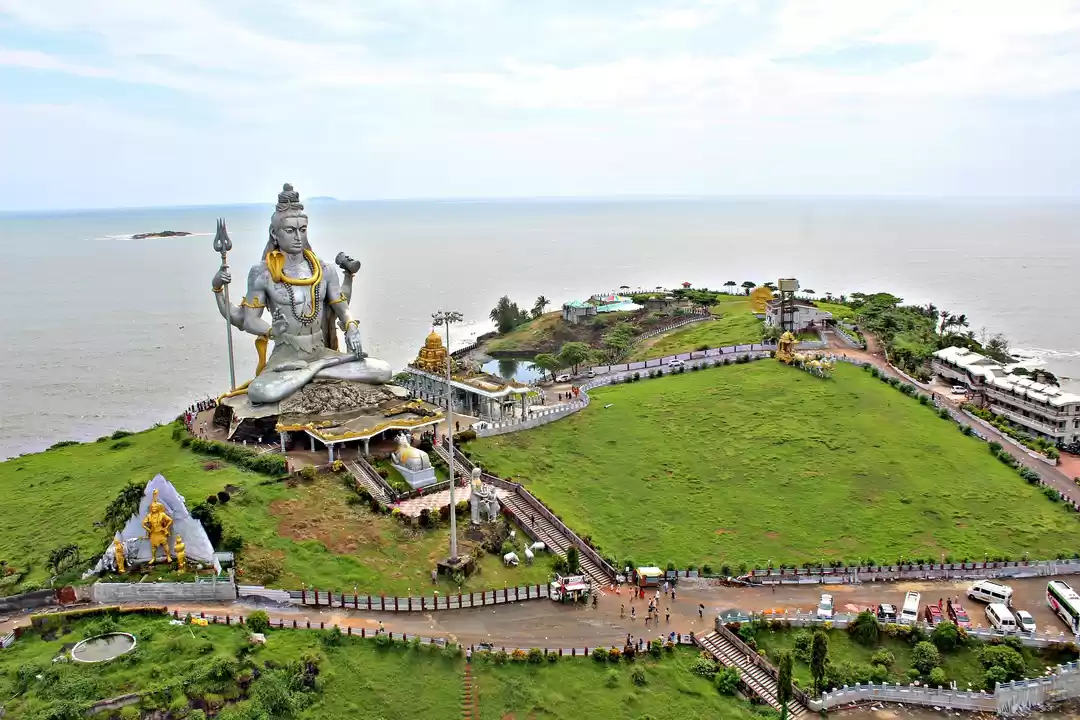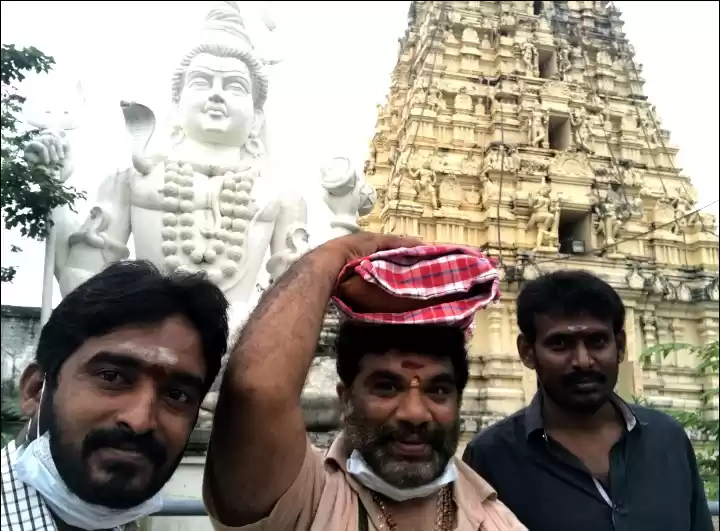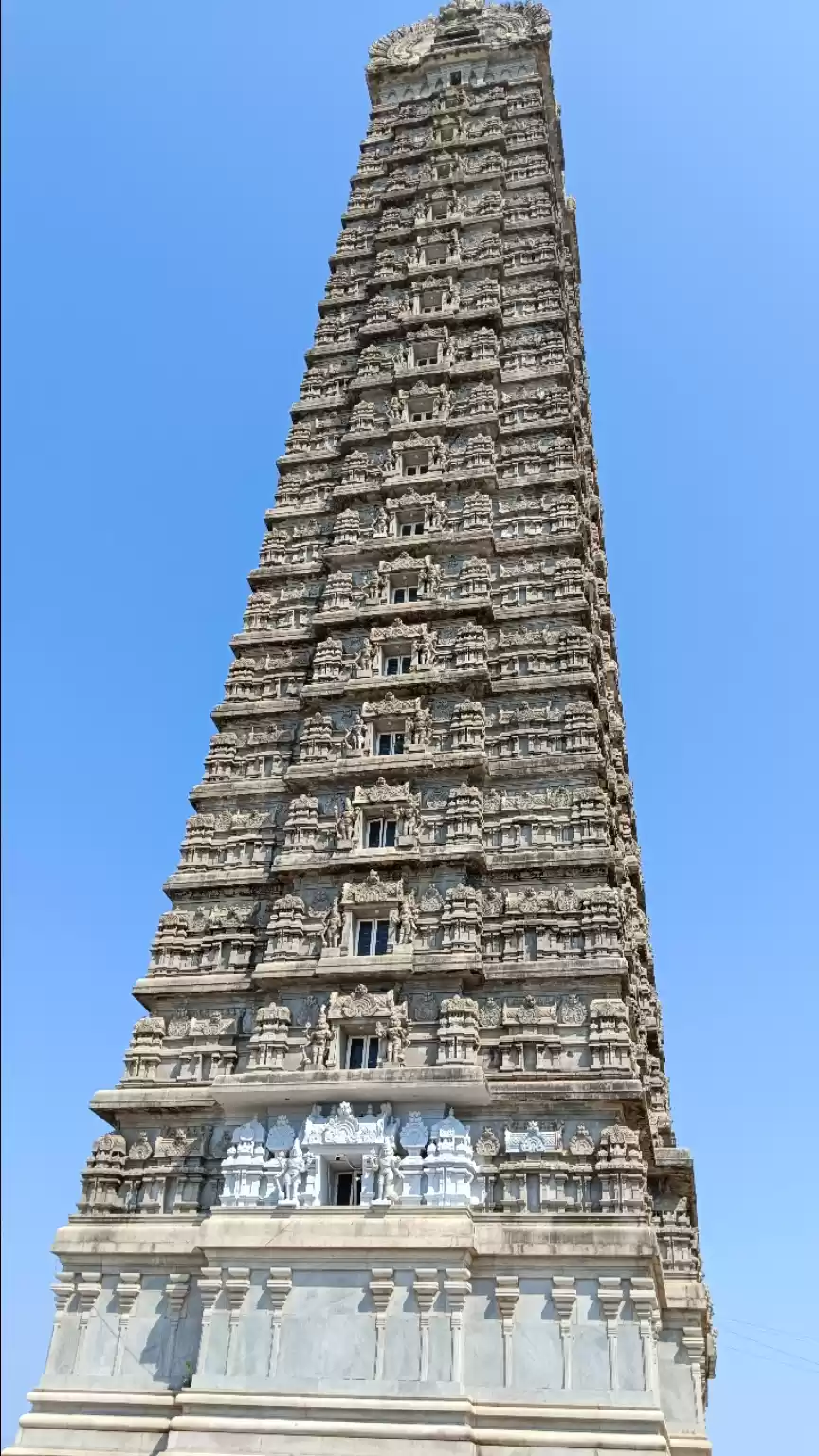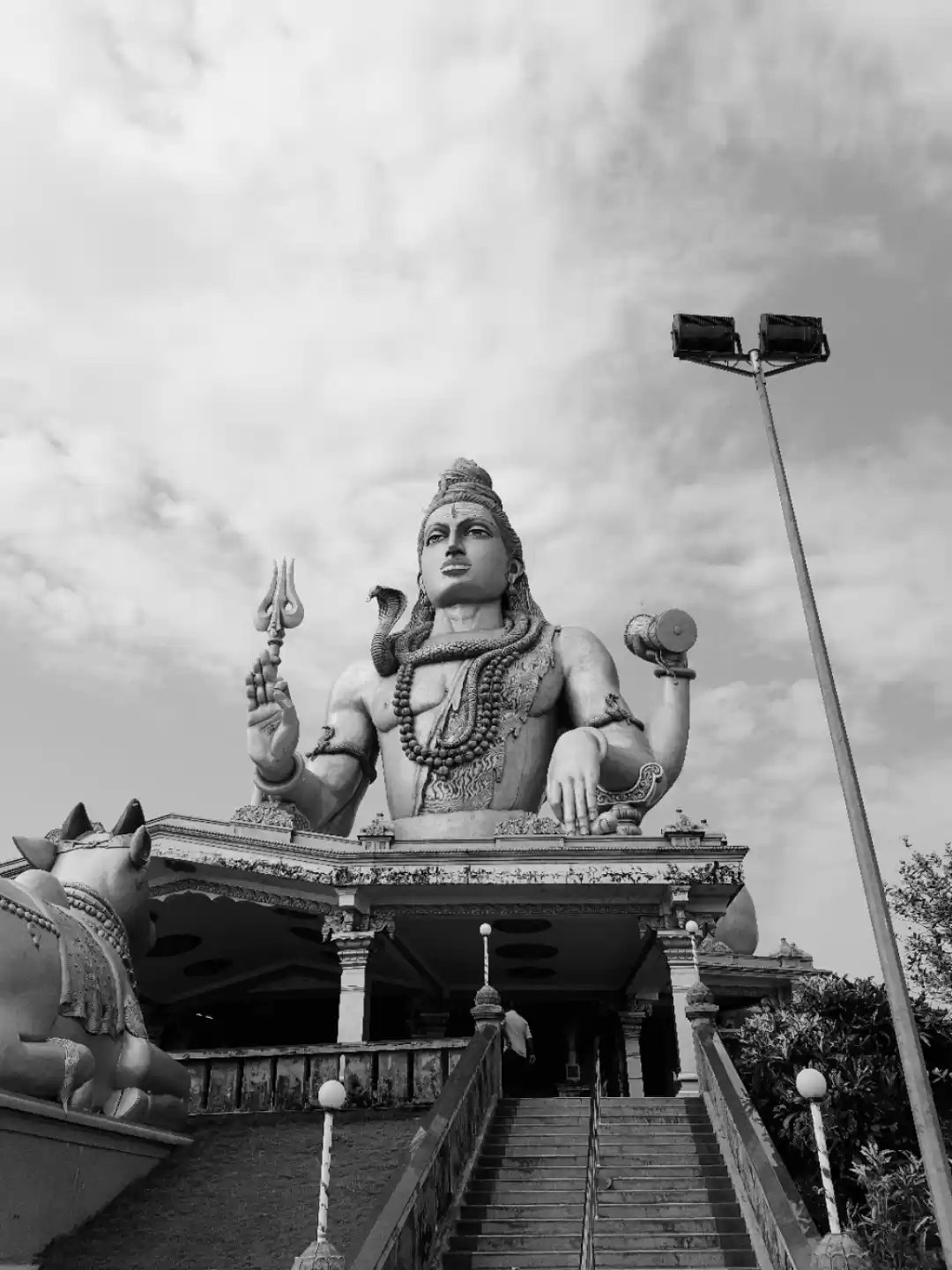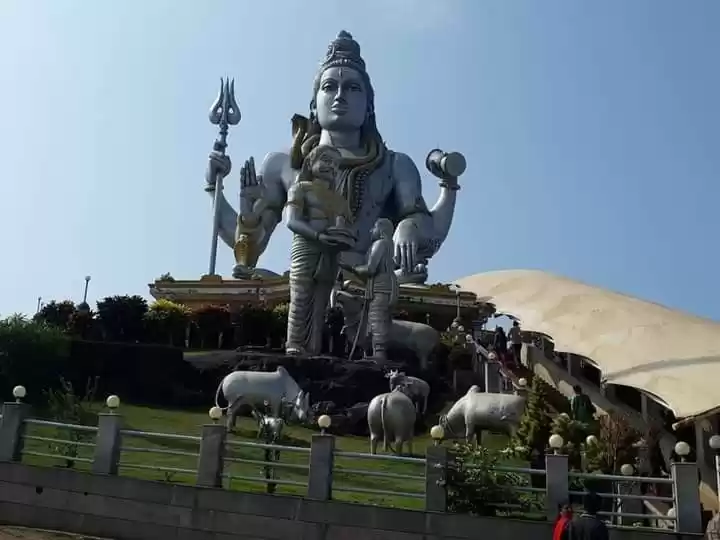Are you looking for a place to visit in Karnataka that offers a unique blend of spirituality, nature, and culture? If yes, then you should definitely consider visiting Murudeshwar Temple, a stunning temple dedicated to Lord Shiva that is located on a scenic beach in the Arabian Sea.
Murudeshwar Temple is one of the most popular and revered temples in Karnataka, attracting millions of devotees and tourists every year. The temple is also known for its rich history, architecture, and features that make it a must-see attraction for anyone who loves to explore the divine.
In this article, we will tell you everything you need to know about Murudeshwar Temple, such as its location, history, architecture, deity, attractions, and planning guide. We will also share some tips and tricks on how to make the most of your trip to this divine destination.
Murudeshwar Temple: A Brief History
Murudeshwar Temple was built by King Bhoja in the 10th century CE as a tribute to Lord Shiva. The temple was originally located on an island called Murud, which was later submerged by the sea due to natural causes. The king then shifted the temple to its present location on the mainland and expanded it with the help of various rulers over time.
The temple has witnessed many historical events and legends associated with it, such as its role in defeating Tipu Sultan’s army during the Third Anglo-Mysore War in 1799 CE. The temple also has a connection to Mahabharata, as it is believed that Lord Krishna performed penance here before leaving for Dwarka.
The temple is also known for its association with sage Narada, who is said to have taught Lord Shiva the secrets of yoga and meditation here. The temple also has a beautiful statue of Narada that is placed near the entrance of the main hall.
Murudeshwar Temple: A Stunning Architecture
Murudeshwar Temple is one of the most impressive temples in India for its architecture and design. The temple has a unique style that combines elements of Dravidian and Nagara styles. The temple has a shikhara (tower) that rises 120 feet above the ground and has 12 spires that symbolize the 12 months of the year. The shikhara also has intricate carvings and sculptures that depict various scenes from Hindu mythology.
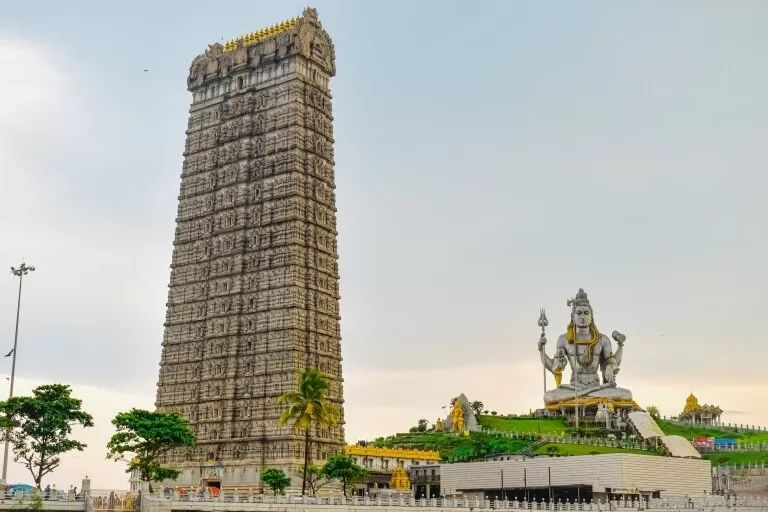
The main hall (mandapa) of the temple is circular in shape and has four entrances (gopura) that lead to different directions. The hall is decorated with pillars (prakara) that have intricate carvings and sculptures. The sanctum (garbhagriha) of the temple is located at the center of the hall and has a black stone idol of Lord Shiva that is 18 feet tall and weighs 2 tons.
The idol of Lord Shiva is made of black stone and has four arms holding various weapons such as trident (trishula), conch shell (shankha), discus (chakra), and mace (mala). The idol also has a third eye on his forehead that glows with divine light. The idol is adorned with jewels and ornaments that reflect his power and glory.
Murudeshwar Temple: A Sacred Deity
Murudeshwar Temple is dedicated to Lord Shiva as his main deity. Lord Shiva is one of the most revered gods in Hinduism and is considered as the supreme god who presides over creation, preservation, destruction, transformation, etc. He is also known as Mahadeva or Bhagavat or Shankar or Nataraja or Rudra or many other names.
Lord Shiva is worshipped at this temple as he represents both destruction and creation. He symbolizes death but also life; he destroys evil but also creates good; he transcends time but also rules over it; he is calm but also fierce; he is compassionate but also wrathful; he is one but also many; he is formless but also manifest; he is eternal but also changing; etc.
Lord Shiva’s attributes include his third eye that signifies his omniscience; his crescent moon on his head that signifies his wisdom; his snake around his neck that signifies his power; his trident that signifies his authority; his drum that signifies his rhythm; his drumstick that signifies his action; etc.
Lord Shiva’s rituals include offering prayers (puja) to him daily at dawn or dusk; chanting mantras (hymns) to him at specific times or occasions; performing rituals (yajna) to him at specific locations or altars; worshipping him with flowers (prasadam) or fruits (dakshina); etc.
Murudeshwar Temple: A Scenic Beach
Murudeshwar Temple is also located on a scenic beach that offers a stunning view of the Arabian Sea. The beach is about 2 km long and has golden sand and clear water. The beach is ideal for relaxing, swimming, surfing, or sunbathing.
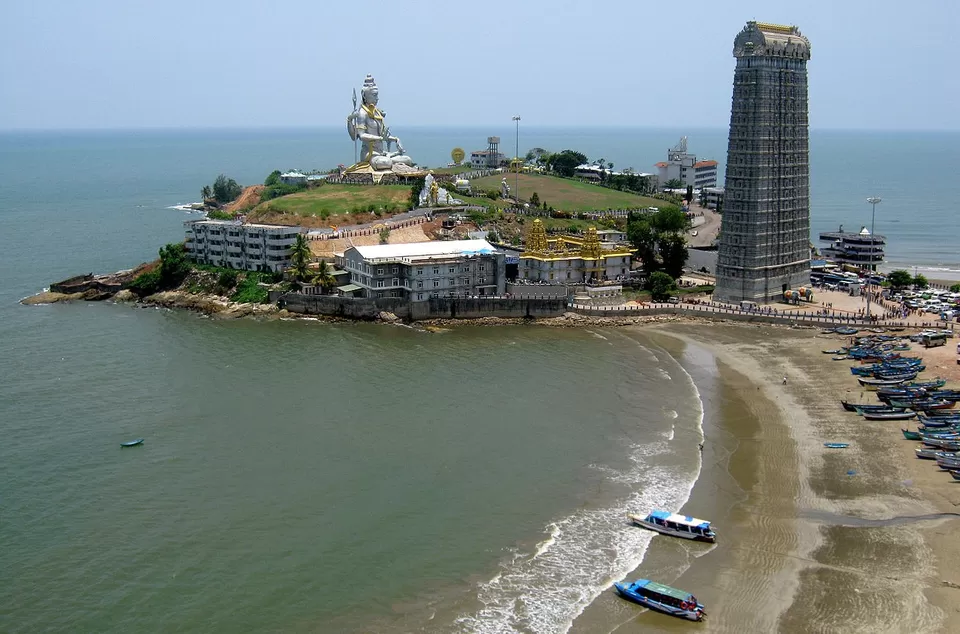
The beach is also surrounded by lush green hills and coconut trees that add to its beauty and charm. The beach is also a popular spot for birdwatching, as it attracts many migratory birds such as pelicans, herons, egrets, etc.
The beach is also a great place to enjoy the sunset or the sunrise, as it offers a spectacular view of the sky and the sea. The beach is also a great place to watch the fishermen bring in their catch or the locals sell their fruits and vegetables.
Murudeshwar Temple: A Nearby Fort
Murudeshwar Temple is also located near a fort that offers a panoramic view of the coast. The fort is called Murud Fort and was built by Shivappa Nayaka in the 17th century CE. The fort has four bastions that are connected by walls and gates. The fort has two temples inside it, one dedicated to Lord Shiva and one dedicated to Goddess Parvati.

The fort is also known for its historical significance, as it was used by various rulers over time, such as Tipu Sultan, Hyder Ali, and the British. The fort was also involved in several battles and sieges during the wars between Mysore and Maratha.
The fort is also known for its natural beauty, as it has a lush green landscape and a serene atmosphere. The fort is also a great place to enjoy the breeze or the shade, as it offers a refreshing view of the surroundings.
Murudeshwar Temple: A Statue Park
Murudeshwar Temple is also located near a statue park that showcases various statues of Lord Shiva in different poses and styles. The statue park is called Murudeshwar Statue Park and was inaugurated in 2019 CE. The statue park has 12 statues of Lord Shiva that are made of bronze or stone or wood or metal.
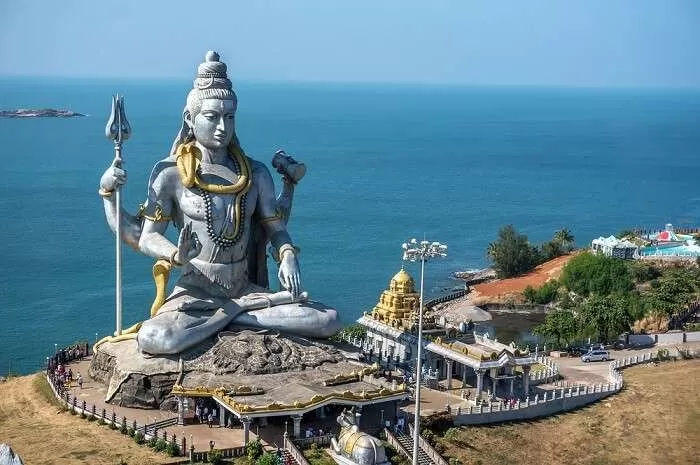
The statue park has statues of Lord Shiva in various postures such as dancing (Nataraja), meditating (Padmasana), holding trident (Trishula), holding conch shell (Shankha), holding discus (Chakra), holding mace (Mala), etc. The statue park also has statues of Lord Shiva with his consort Parvati (Sati), his son Ganesha (Vighneshvara), his daughter Kartikeya (Skanda), his brother Brahma (Brahmavallabha), etc.
The statue park has statues of Lord Shiva with different themes such as nature (Nataraja with lotus flowers), culture (Nataraja with musical instruments), art (Nataraja with paintings), science (Nataraja with books), etc. The statue park also has statues of Lord Shiva with different expressions such as smiling (Nataraja with open mouth), frowning (Nataraja with closed mouth), angry (Nataraja with clenched teeth), etc.
Dress Code For Visiting The Temple
There is no specific dress code for visiting Murudeshwar Temple. However, some Hindu organisations have suggested that male devotees and tourists should wear a dhoti, while women should wear a saree or churidar. This is to follow the tradition and respect the temple customs.
Murudeshwar Temple: A Planning Guide
Murudeshwar Temple is a divine destination in Karnataka that offers a unique blend of spirituality, nature, and culture. If you are planning to visit this temple and its surroundings, here are some tips and tricks on how to make the most of your trip:
When to visit:
You can visit this temple throughout the year, but the best time to visit is during winter months from December to February when the weather is pleasant and cool.
Where to stay:
You can stay at various hotels or resorts near this temple or on the beach or on the hilltops. Some of the popular options are Murud Beach Resort & Spa, Murud Fort Resort & Spa, Murudeshwar Palace Resort & Spa, etc.
What to eat:
You can eat at various restaurants or cafes near this temple or on the beach or on the hilltops. Some of the popular options are Murud Beach Restaurant & Cafe, Sea Lounge, etc.
Also check out: This Temple Town In Karnataka Is Known For It's Intricately Carved Ancient Temples
Where To Eat Near Murudeshwar Temple
There are many places to eat near Murudeshwar Temple that offer a variety of cuisines and dishes. Here are some of the best places to eat near the temple:

Sri Ganesha Bhavan:
This is a vegetarian restaurant that serves authentic South Indian dishes made with fresh ingredients. You can enjoy dishes like idli, dosa, vada, upma, etc. along with sambar, chutney, and rasam. The restaurant is located near the temple and is open from 6:30 AM to 3:30 PM and 6:30 PM to 10:30 PM.
Sea Lounge:
This is a seafood restaurant that serves delicious seafood cooked in local flavours. You can enjoy dishes like fish curry, prawn curry, crab masala, etc. along with rice, roti, or noodles. The restaurant is located in RNS Residency and is open from 12:00 PM to 11:00 PM.
Naveen Beach Resort:
This is a beach resort that serves a variety of cuisines and dishes. You can enjoy dishes like Chinese, Italian, Continental, etc. along with salads, soups, desserts, etc. The resort also has a multi-cuisine restaurant that serves different flavours every day.
Nayak Fishland:
This is a fish market that also serves fresh seafood cooked in local flavours. You can enjoy dishes like fish fry, fish curry, fish soup, etc. along with rice or bread. The market also has stalls that sell other seafood items like crabs, prawns, lobsters, etc.
Romanish Restaurant:
This is an Indian restaurant that serves North Indian and South Indian dishes made with quality ingredients. You can enjoy dishes like butter chicken, paneer tikka masala, dal makhani, etc. along with roti or naan bread.
You can also check out: My 2-Day Trip To Experience the Surreal Beauty Of the Pilgrimage Town Of Murudeshwara
Murudeshwar Temple is a divine destination in Karnataka that offers a unique blend of spirituality, nature, and culture. It is a place where you can experience the glory of Lord Shiva and his consort Parvati, as well as the beauty of the Arabian Sea and the surrounding hills. It is also a place where you can enjoy various attractions and activities, such as visiting the statue park, exploring the fort, relaxing on the beach, or watching the sunset.
If you are planning to visit this temple and its surroundings, we hope that this article has given you all the information and tips that you need to make your trip memorable and enjoyable. You can also check out our website for more details and reviews about this temple and other places in Karnataka.
We wish you a happy and blessed journey to Murudeshwar Temple!

























